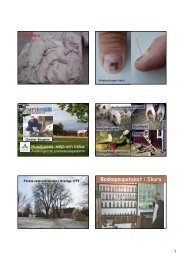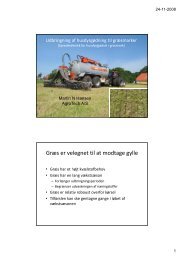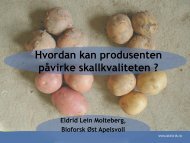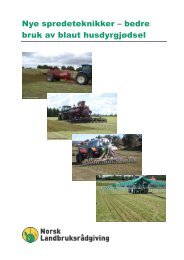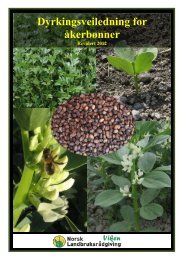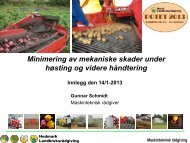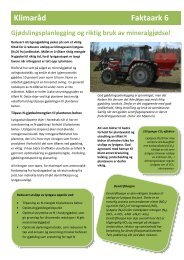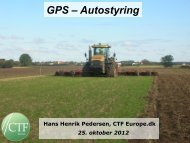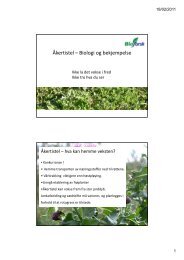You also want an ePaper? Increase the reach of your titles
YUMPU automatically turns print PDFs into web optimized ePapers that Google loves.
Fig. 3. Carrot psyllid eggs in leaf and petiole. Photo: Lund University<br />
Living or Non-living Mulch<br />
Based on reports from the 1930s that sawdust among the plants reduced attack by carrot<br />
psyllid (Apsits 1931), studies were conducted in Sweden using different amounts and<br />
application intervals of sawdust. The results confirmed the earlier reports, with a great<br />
reduction in egg-laying and damage to the plants in all of the treatments with sawdust<br />
(Rämert 1993). It appears that the monoterpenes in sawdust from spruce or pine has a<br />
repellent and/or confusing effect. Both fresh sawdust and sawdust treated with turpentine<br />
or monoterpenes greatly reduced damage to carrots from the carrot psyllid (Nehlin et al.<br />
1994). In a study in Norway in the mid-1990s, carrots were grown either by conventional<br />
agronomic practice or in an intercrop or with a mulch of either sawdust or plant material.<br />
There was also a treatment combining an intercrop between beds and a sawdust mulch in<br />
the beds (fig.4). The results showed a significant reduction in the number of plants with<br />
carrot psyllid eggs in all of the treatments with mulch or intercrop (fig. 5). The greatest<br />
reduction was in the treatment with intercrop (vetch) between the beds and sawdust in<br />
the beds (Aas 2000; Brandsæter et al. 1999).<br />
Meadow. Bioforsk Rapport vol. 5 nr. 151 2010<br />
5




